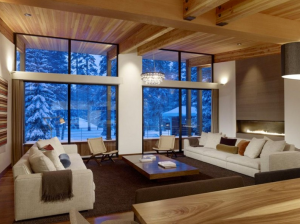 Seattle solar power use and radiant heat is higher than the national average, but the amount of money spent on heating and cooling our homes still makes up the majority of our energy bill. Heating and cooling account for 56 percent of the energy use in a typical American home, according to the Department of Energy. Aside from regular HVAC maintenance, there are a number of things you can do to reduce your home heating costs and save you money.
Seattle solar power use and radiant heat is higher than the national average, but the amount of money spent on heating and cooling our homes still makes up the majority of our energy bill. Heating and cooling account for 56 percent of the energy use in a typical American home, according to the Department of Energy. Aside from regular HVAC maintenance, there are a number of things you can do to reduce your home heating costs and save you money.
1. Insulate. Insulation is your home’s all-purpose force field against high energy bills. It minimizes heat transfer in winter and summer, provides ventilation to control moisture and makes your home more livable. Bringing your attic insulation up to code for your region is one of the most cost-effective ways to winter-proof your home. Before you blow insulation, be sure to seal all ductwork, plumbing and cable TV penetrations. Leaky ducts can account for 10 percent to 30 percent of heating and cooling costs.
2. Adjust your thermostat. You can save 10 percent on your winter heating bills by adjusting your thermostat 10 to 15 degrees cooler for the eight hours you’re at work, according to the Department of Energy. Cut it back an additional eight hours when you sleep and you might save 20 percent.
A programmable thermostat helps you easily adjust your home’s temperature and is a wise investment.
3. Reduce the temperature of your hot water. The Department of Energy estimates that water heaters account for 14 percent to 25 percent of our monthly energy bill. Water heaters are often factory-set at 140 degrees Fahrenheit, hot enough to scald. The Department of Energy says most of us can live comfortably with 120-degree water. You can save 3 percent to 5 percent on your water heating costs for every 10 degrees of setback.
To save even more, you can reduce hot water use with low-flow showerheads and faucet aerators, jacket the heater and wrap hot water pipes to minimize stand-by heat loss, and install a timer to take advantage of cheaper off-peak power. For greater savings, ditch the tank entirely and invest in an energy-saving on-demand tankless water heater.
4. Insulate your windows. Many homes lose costly heat the old-fashioned way: through outdated windows. Double-pane thermal windows arrest the heat transfer by inserting dead-air space, a poor conductor, between two panes. Unlike single-pane windows, which can lose more heat in winter than they let in, energy-efficient windows enable homes to take advantage of free solar heating during chilly weather.
As a make-do plan, create your own energy-saving dead-air space by affixing clear plastic sheeting over the interior opening of unused windows.
5. Winterize your chimney. Although your chimney probably has a working damper, it’s unlikely to be airtight. Poke your hand up inside the flue and you’ll probably feel the draft. Because masonry retrofits can prove costly and chimney caps are cumbersome during fireplace season, most homeowners opt to place fitted glass fireplace doors over the fireplace.
Other tips:
- Reverse your ceiling fans: It will help circulate rising heated air down to where you need it.
- Close heating vents and doors to little-used rooms.
- Insulate outlets and light switches with inexpensive switch insulators
- Replace the light bulbs you leave on longest with CFL, or compact flourescent light, bulbs. They use 75 percent less energy and save $40 in energy costs over their lifetime.
- Take advantage of federal and state tax rebates, including Energy Star appliance upgrades.
- Have your home’s HVAC system serviced yearly.
- Clean and replace filters on your furnace once a month or as needed to permit better air flow through the house.